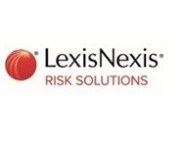Driven from distraction - Keeping pace with Advanced Driver Assistance Systems for vehicle-centric underwriting

Authored by Andrew Ballard, Product Principal, UK and Ireland, LexisNexis Risk Solutions
Human error is a factor in 95% of all road accidents, according to RoSPA which embraces the strapline ‘accidents don’t have to happen’. The good news is that based on LexisNexis® Risk Solutions’ analysis, 98% of new cars have one or more Advanced Driver Assistance System (ADAS) feature, compared to just 17% in 2014. More importantly, we have found that the right combination of ADAS features could reduce claims frequency by over a third. It has therefore become vital for motor insurance providers to know how a vehicle is equipped from a safety perspective at the point of quote, and the impact of those particular ADAS features on claims frequency.
Nearly 38% of Britain’s road accidents occur due to a driver failing to look properly and nearly a fifth due to drivers failing to judge speed and distance, making the case for ADAS clear. After all, forward collision warnings and blind spot sensors don’t suffer fatigue or get distracted and can make complex decisions in an instant. As more car buyers recognise their value, the trajectory of ADAS evolution will only continue upward.
Until recently it was nearly impossible to identify exactly which ADAS features a specific vehicle was equipped with when writing a motor insurance policy. Car manufacturers create their own unique terminology, definitions and names, making comparisons difficult. In addition, many items are chosen as optional extras when a vehicle is purchased from new so looking at the standard equipment or “trim level data” for the vehicle might only provide half the picture.
Step in the LexisNexis® Risk Solutions team of data scientists who, three years ago, developed an ADAS classification system specifically intended for the insurance market. They used machine learning to scan millions of lines of car manufacturer vehicle data to logically sequence and classify vehicle safety features and the component’s intended operation or purpose. They then undertook a massive and ongoing exercise to analyse millions of insurance claims to understand the performance of ADAS on specific vehicles and how they relate to claims frequency.
From this work LexisNexis® Vehicle Build was born, the only data enrichment solution for the insurance market that enables insurance providers to establish the differences in risk profile associated with ADAS equipped vehicles at Vehicle Identification Number (VIN) level, to take into account optional features chosen at point of sale. It reveals the presence, purpose and behaviour of ADAS at VIN level, plus its effectiveness in reducing claims. This intelligence can either be delivered at quote at a granular level, or as an ADAS Rating Indicator value of one through five (1-5) in terms of reducing claims frequency based on the number and type of features on a specific vehicle.
It is easy to appreciate how using this system is helping insurance providers to know more about a prospect, or policyholder’s car, and enable them to personalise their motor insurance quote. As ADAS evolves and the feature options grow, understanding this risk profile is paramount.
Demonstrating the uptick in ADAS adoption, using LexisNexis Vehicle Build, our analysis shows that since 2014 the number of vehicles which have a positive ADAS Risk Indicator (from one to five) has risen by 58% and the ADAS risk indicator on one UK’s best-selling hatchbacks has increased from two to five in the same time period. Importantly, two of the most predictive features in terms of good insurance outcomes, Forward Automatic Emergency Braking (FWAEB) and Adaptive Cruise Control with High Speed (ACCHS), are now on more vehicles than ever. FWAEB featured on 16% of vehicles in 2014 and is now on 79%, while the number of vehicles featuring ACCHS has risen from 11% in 2014 to 43% today. While this growth is impressive, notably, not all manufacturers and models are progressing at the same rate and some modern vehicles remain on the same ADAS Risk Indicator they were on in 2014.
As well as evolving at varying rates, ADAS technology and the software that supports decision making is continually being enhanced. For example, improved hardware and software like superior radar and clearer LiDAR images provide an even better view of a vehicle’s surroundings, allowing for greater perceptive abilities and more effective assistance. The fact that more vehicles now take mitigating action, rather than provide a warning also needs to be appreciated.
Meanwhile, the UK has become the first country in Europe to allow hands-free driving technology, which monitors road markings, speed signs and evolving traffic conditions plus monitoring of the driver, to inform steering, road position and braking. Although only available for use on 2,300 miles of zoned motorway, this is a huge development and as a feature-on-demand, it will be up to the driver to pay a subscription to activate the hands-free system.
There have been such enormous developments in ADAS technology since its inception, and this will speed up as we head down the road to a future of connected cars. Over the air updates to ADAS will change the nature of risk for insurance providers, while cars connected to other cars and local infrastructure may help forewarn of conditions ahead such as poor weather, traffic lights, roadworks and diversions that can all help to improve driver safety and reduce accidents.
As we move rapidly towards this world, solutions such as LexisNexis Vehicle Build will need to keep pace to ensure insurance providers have a true understanding of vehicle risk for pricing and underwriting. With such rapid progression of ADAS technology, its impact on claims propensity cannot be ignored.
About LexisNexis
At LexisNexis Risk Solutions, we believe in the power of data and advanced analytics for better risk management.
With over 40 years of expertise, we are the trusted data analytics provider for organisations seeking actionable insights to manage risks and improve results while upholding the highest standards for security and privacy.
We enable insurers and brokers to improve decision-making, increase profitability and transform business performance with actionable insights from our data and analytics solutions. For more information, please contact risk.lexisnexis.co.uk/insurance or enquiries-info@lexisnexis.co.uk.

